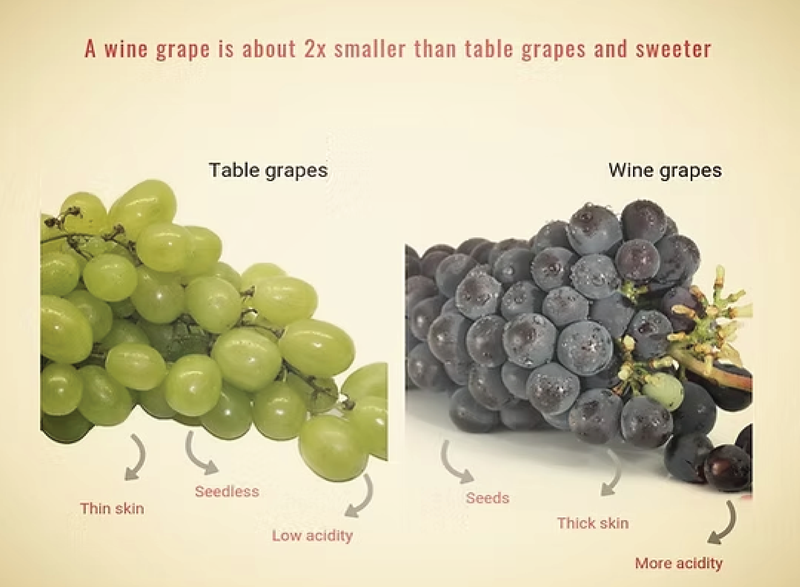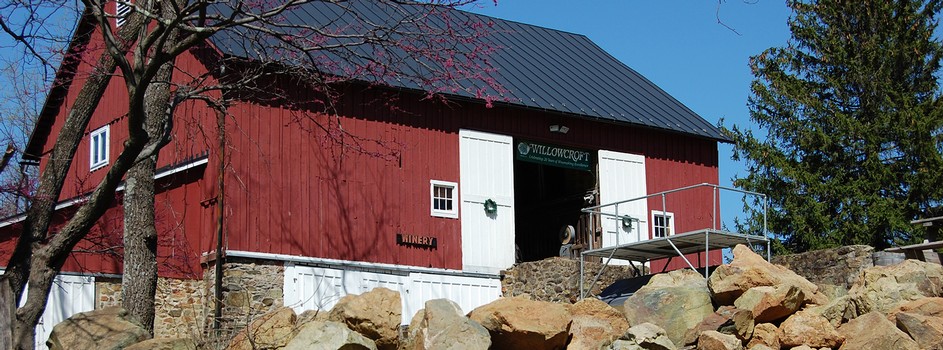Wine Grapes vs. Table Grapes: What’s the Difference?

When you walk through the produce aisle, you’ll find plump, juicy grapes ready for snacking. But step into a vineyard, and the grapes look quite different—smaller, darker, and often less sweet. So, what sets wine grapes apart from table grapes (sometimes used for jelly and juice)? It all comes down to size, skin thickness, sugar levels, seeds, and purpose.
1. Size & Appearance
- Smaller and more compact in clusters.
- Thick skins and a higher ratio of skin to juice, contributing to deep color and tannins.
- Often darker and more intense in hue for reds; golden or green for whites.
- Larger, plumper, and juicier.
- Thinner skins for easy eating.
- Uniform in color, often bright green or deep red, bred for visual appeal.
2. Sugar & Acidity Levels
Wine grapes have higher sugar content (24-28% sugar, or 24-28° Brix) to allow for fermentation into alcohol.
- Table grapes contain less sugar (typically around 15-17° Brix) and more water, making them refreshing but unsuitable for winemaking.
- Wine grapes maintain higher acidity, which is crucial for balance in winemaking, while table grapes are milder in acidity, making them sweeter to eat.
3. Seeds vs. Seedless
- 🍷 Wine Grapes: Typically contain seeds, which contribute to tannins in the winemaking process. Some varieties (like Sémillon) can be nearly seedless but are rare.
- 🍇 Table Grapes: Usually seedless for convenience, thanks to selective breeding.
4. Purpose: Eating vs. Winemaking
- Table grapes are bred for fresh consumption, meaning they focus on crisp texture, juiciness, and mild sweetness.
- Wine grapes are grown to be fermented into wine, meaning they need higher sugar, acidity, tannins, and complex flavors to create a balanced final product.
5. Growing Conditions & Farming Practices
- Dry-farmed or minimally irrigated, allowing deep roots to pull minerals from the soil.
- Lower-yielding vines (grapes per vine) to concentrate flavors.
- Harvested once per season at peak ripeness, often by hand for premium wines.
- Heavily irrigated for plumpness.
- Grown for high yields, meaning more grapes per vine but with less concentrated flavors.
- Often harvested multiple times for consistent supply.
Technically, yes—but it won’t taste great. Because table grapes have lower sugar and acidity and higher water content, any wine made from them would be diluted, overly sweet, and lacking in depth. Table grape skins also contain fewer tannins, which means red wine made from them won’t have the structure or aging potential of true wine grapes.
While both table grapes and wine grapes come from the Vitis family, their differences make them suited for entirely different purposes. Table grapes are bred for fresh eating—crisp, juicy, and mild—while wine grapes are cultivated for complexity, sugar, acidity, and depth, all necessary for crafting fine wine.
Next time you enjoy a glass of Willowcroft wine, remember that these grapes weren’t meant for snacking—they were grown with intention, patience, and tradition to bring out the best flavors in every sip. 🍷

